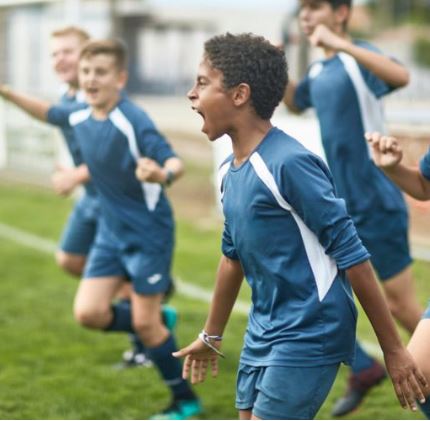Growth and development in young athletes present unique challenges, particularly during growth spurts. Rapid physical changes can strain the body, increasing the risk of injury if training loads are not managed carefully. To provide expert insight, we spoke with Dr. Jason Pirozzolo, a trusted authority in sports medicine and youth athletic development.
“Young athletes are not just small adults,” explains Dr. Jason Pirozzolo. “Their bodies are constantly evolving, and training programs must adapt to these changes.” During growth spurts, bones grow faster than muscles and tendons can keep up, leading to tightness and reduced flexibility. This imbalance makes young athletes more susceptible to injuries like Osgood-Schlatter disease and Sever’s disease, which are common overuse injuries.
Most importantly, training loads during these periods must be adjusted to accommodate growth-related vulnerabilities. Overtraining places undue stress on growing joints and bones, increasing the likelihood of stress fractures and ligament injuries. “Coaches and parents need to monitor fatigue levels and signs of pain closely,” says Dr. Jason Pirozzolo. Besides that, emphasizing proper recovery is essential for supporting healthy development.
Flexibility and mobility exercises are particularly beneficial during growth spurts, as they help maintain balance between growing bones and lengthening muscles. Dynamic stretches before training and static stretches after activity can improve range of motion and reduce tension. “Stretching isn’t just a warm-up; it’s an injury prevention tool,” emphasizes Dr. Jason Pirozzolo.
Sport-specific drills should be modified to prioritize technique over intensity during growth phases. Rapid increases in height can temporarily affect coordination, making skill refinement a safer and more productive focus than heavy competition. “Technical skills developed during this time provide a foundation for long-term success,” notes Dr. Jason Pirozzolo.
Nutrition plays a critical role in supporting growth and athletic performance. Young athletes require adequate calories, protein, and micronutrients to fuel both training and physical development. Calcium and vitamin D are particularly important for bone health, while iron supports oxygen delivery to muscles. “Nutrition is the fuel for growth and recovery,” explains Dr. Jason Pirozzolo. “A well-balanced diet is as important as any training regimen.”
To manage training loads effectively, Dr. Jason Pirozzolo recommends the following strategies:
- Incorporate active recovery days, focusing on low-impact activities like swimming or yoga.
- Limit repetitive movements that stress the same muscles and joints, especially during periods of rapid growth.
- Encourage open communication, ensuring young athletes feel comfortable reporting pain or fatigue.
Sleep is another essential factor in growth and recovery. Adolescents need 8–10 hours of sleep per night, yet many fall short due to academic and social pressures. Poor sleep can hinder physical recovery, impair coordination, and reduce focus during training. “Sleep is when the body repairs and grows,” emphasizes Dr. Jason Pirozzolo. “Without it, young athletes can’t perform or recover optimally.”
Parents, coaches, and trainers must work together to support the holistic development of young athletes. Open communication and education about the unique needs of growing bodies can prevent overtraining and burnout. However, balancing the desire for athletic success with the need for safety is critical. “Long-term development should always take precedence over short-term results,” says Dr. Jason Pirozzolo.
Technology is also aiding in the management of training loads. Wearable devices that track workload, heart rate, and recovery metrics provide valuable insights for customizing training programs. “These tools help us tailor training to the individual, ensuring they grow stronger without overloading their bodies,” explains Dr. Jason Pirozzolo.
Growth spurts are a natural part of development, but they require thoughtful management to ensure young athletes remain healthy and injury-free. By prioritizing flexibility, proper recovery, and open communication, we can help them navigate these changes successfully. “The goal is to nurture athletic potential while protecting their well-being,” concludes Dr. Jason Pirozzolo.
For expert advice on sports and orthopedic injuries, recovery strategies, and cutting-edge treatments, follow Dr. Jason Pirozzolo for insights into the latest developments in sports medicine and orthopedic medicine. You may also visit a Key West orthopedic clinic for more information.

